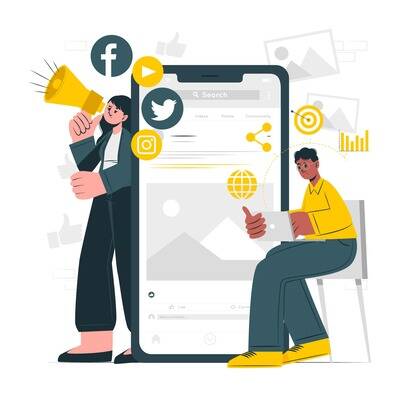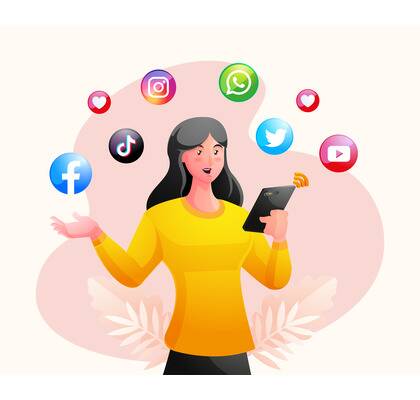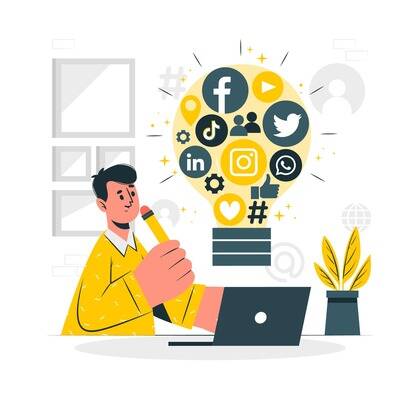Social media has become an integral part of our lives, transforming the way we connect, communicate, and consume information. From the early days of Myspace to the dominance of platforms like Facebook and Instagram, the social media revolution has reshaped our society in unprecedented ways.
Introduction
In today’s digital age, social media platforms have revolutionized the way we interact and share information. These platforms have not only connected people from different corners of the globe but have also given rise to new opportunities for businesses, influencers, and activists. This article will delve into the journey of social media platforms, tracing their evolution from Myspace to Instagram, and exploring the impact they have had on our lives.
The rise of Myspace
Before the emergence of Facebook and Twitter, Myspace was the pioneer of social networking. Launched in 2003, Myspace quickly gained popularity, allowing users to create personalized profiles, connect with friends, and discover new music. With its customizable layouts and extensive user base, Myspace laid the foundation for the social media revolution.
The emergence of Facebook
In 2004, Mark Zuckerberg created Facebook, a platform initially exclusive to Harvard University students. As Facebook expanded its reach, it became the dominant force in social media, with billions of users worldwide. Facebook introduced features like News Feed, photo sharing, and groups, transforming how we consume and share content with our network of friends and acquaintances.



The dominance of Twitter
Twitter, with its unique microblogging concept, revolutionized the way we communicate online. By limiting posts to 280 characters, Twitter encouraged brevity and real-time updates. Its hashtag feature became a powerful tool for organizing discussions and tracking trends. Twitter’s influence extended to politics, breaking news, and even customer service interactions.
Social media is not just a spoke on the wheel of marketing. It’s becoming the way entire bicycles are built.
– Ryan Lilly
The visual revolution: YouTube and Instagram
YouTube disrupted the traditional media landscape by empowering individuals to create and share videos on a global scale. From music videos to tutorials, YouTube became a hub for entertainment and education. Instagram, on the other hand, focused on visual content and mobile experience. With its user-friendly interface and filters, Instagram made photo sharing accessible to everyone, birthing a new generation of influencers and content creators.
The professional network: LinkedIn
LinkedIn differentiated itself from other platforms by catering specifically to professionals. As a networking tool, LinkedIn allowed individuals to showcase their skills, connect with colleagues, and discover career opportunities. Its influence expanded beyond job hunting, with businesses utilizing LinkedIn for recruitment and thought leadership.
The messaging apps: WhatsApp and Messenger
The advent of messaging apps brought private conversations to the forefront. WhatsApp gained popularity with its end-to-end encryption and simplicity, enabling users to exchange messages, make voice and video calls, and share media securely. Facebook Messenger, integrated with the social media giant, offered a seamless messaging experience within the Facebook ecosystem.
The rise and fall of Snapchat
Snapchat introduced the concept of ephemeral messaging, where photos and videos disappeared after a set period. This unique feature appealed to younger demographics, making Snapchat a cultural phenomenon. However, Snapchat faced challenges from competitors like Instagram, which adopted similar features, leading to a decline in its user base.
The power of influencers and content creators
With the rise of social media, influencers and content creators gained significant influence and a platform to showcase their talent. They shaped trends, promoted brands, and amassed millions of followers. Social media platforms, recognizing their value, introduced monetization features, allowing influencers to turn their passion into a profession.
Social media and activism
Social media has played a crucial role in promoting social movements and raising awareness. Platforms like Facebook and Twitter have facilitated the spread of information, organized protests, and amplifying marginalized voices. Hashtags like #BlackLivesMatter and #MeToo have sparked global conversations and brought attention to important issues.
The future of social media
As social media continues to evolve, several trends and challenges lie ahead. The rise of video content, the integration of augmented reality, and the emergence of new platforms are expected. However, concerns regarding privacy, misinformation, and addiction also need to be addressed for a sustainable social media landscape.
Conclusion
The social media revolution has transformed the way we communicate, connect, and consume information. From Myspace to Instagram, each platform has left a significant mark on our society. Social media has brought people closer, empowered individuals, and given rise to new possibilities. As we move forward, it is important to navigate this digital landscape responsibly and leverage its potential for positive change.




